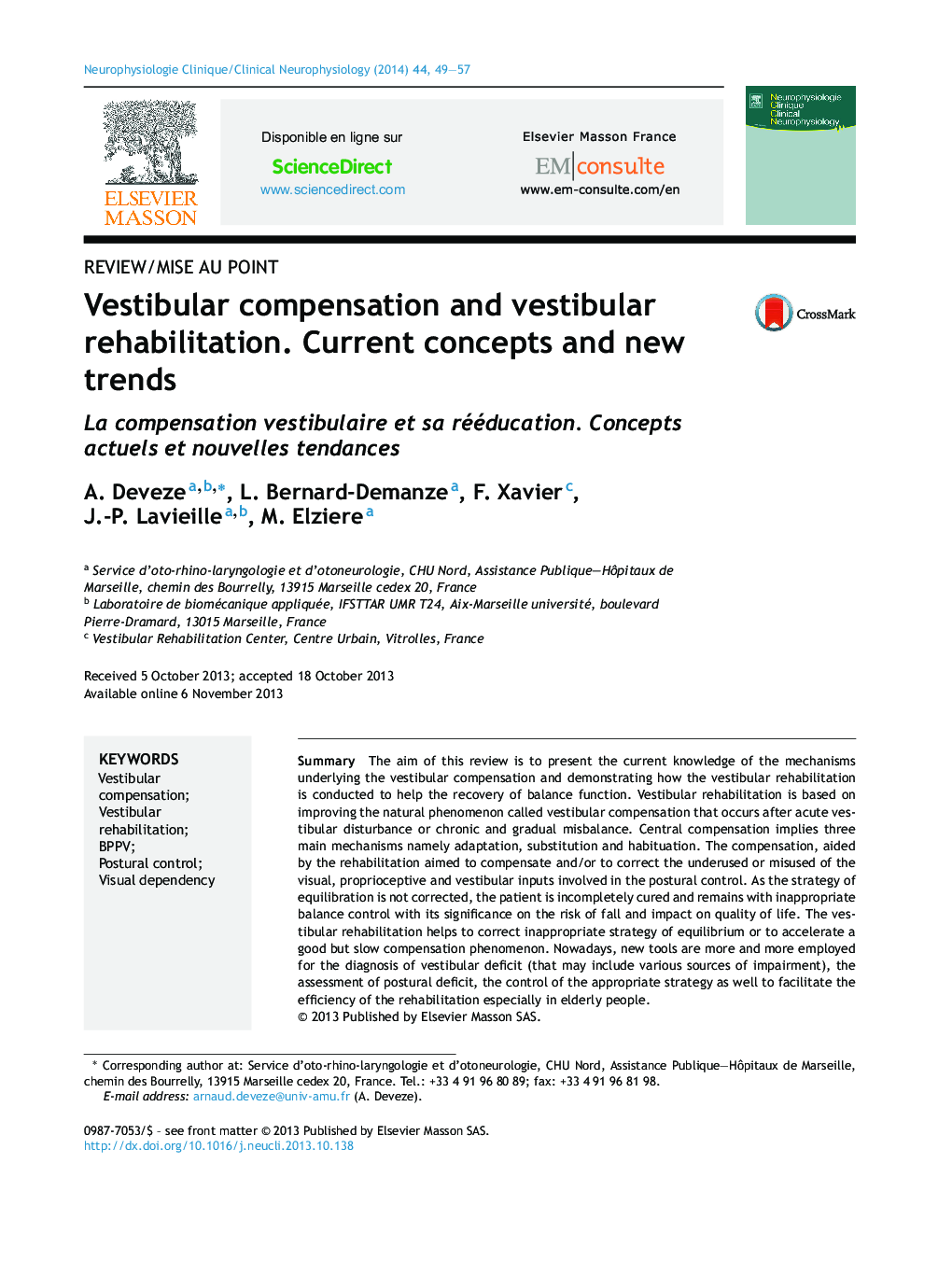| Article ID | Journal | Published Year | Pages | File Type |
|---|---|---|---|---|
| 3082330 | Neurophysiologie Clinique/Clinical Neurophysiology | 2014 | 9 Pages |
SummaryThe aim of this review is to present the current knowledge of the mechanisms underlying the vestibular compensation and demonstrating how the vestibular rehabilitation is conducted to help the recovery of balance function. Vestibular rehabilitation is based on improving the natural phenomenon called vestibular compensation that occurs after acute vestibular disturbance or chronic and gradual misbalance. Central compensation implies three main mechanisms namely adaptation, substitution and habituation. The compensation, aided by the rehabilitation aimed to compensate and/or to correct the underused or misused of the visual, proprioceptive and vestibular inputs involved in the postural control. As the strategy of equilibration is not corrected, the patient is incompletely cured and remains with inappropriate balance control with its significance on the risk of fall and impact on quality of life. The vestibular rehabilitation helps to correct inappropriate strategy of equilibrium or to accelerate a good but slow compensation phenomenon. Nowadays, new tools are more and more employed for the diagnosis of vestibular deficit (that may include various sources of impairment), the assessment of postural deficit, the control of the appropriate strategy as well to facilitate the efficiency of the rehabilitation especially in elderly people.
RésuméL’objectif de cette revue est de présenter les connaissances actuelles des mécanismes impliqués dans la compensation vestibulaire et décrire comment la rééducation vestibulaire est entreprise pour permettre une récupération du contrôle postural. La rééducation vestibulaire est basée sur la facilitation du phénomène physiologique de compensation vestibulaire qui survient après un déficit vestibulaire aigu ou progressif ou encore une instabilité chronique persistante. La compensation centrale implique la mise en œuvre de trois mécanismes principaux appelés l’adaptation, la substitution et l’habituation. Ces mécanismes visent à corriger la sous-utilisation ou la mauvaise utilisation des entrées vestibulaires, visuelles et proprioceptives impliquées dans le contrôle postural. Tant que la stratégie d’équilibration n’est pas corrigée ou compensée, les patients présentent une altération significative de leur qualité de vie et un risque accru de chute. La rééducation vestibulaire accélère une stratégie de compensation appropriée ou corrige une mauvaise stratégie. Aujourd’hui, de nouveaux outils sont particulièrement utiles à la fois pour diagnostiquer les troubles vestibulaires, identifier la stratégie compensatoire spontanément mise en place et vérifier la bonne progression de la compensation. Des techniques de rééducation novatrice utilisant les substitutions sensorielles montrent leur intérêt dans des situations spécifiques.
